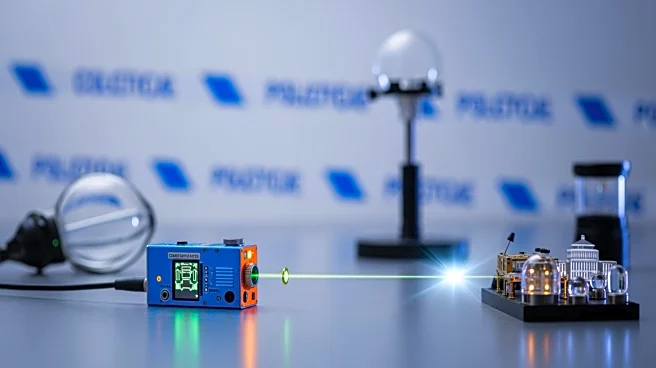What's Happening?
A research team led by Associate Professor Johann Riemensberger from the Norwegian University of Science and Technology has developed a new type of laser that addresses several challenges found in existing
models. This laser, designed to be fast, cost-effective, powerful, and easy to use, has been published in Nature Photonics. The project is a collaboration between NTNU, the Swiss École Polytechnique Fédérale de Lausanne, and Luxtelligence SA. The laser technology is particularly useful for self-driving cars, which rely on Lidar to map surroundings, and can perform measurements with remarkable accuracy. Additionally, the laser can detect hydrogen cyanide gas, a highly toxic substance, making it essential for safety and environmental monitoring. The laser is built using advanced materials and microscopic light circuits, allowing for easy frequency adjustments and mass production.
Why It's Important?
The development of this new laser technology has significant implications for various industries, particularly in enhancing the capabilities of self-driving vehicles and environmental monitoring systems. By providing a more accurate and cost-effective solution for Lidar systems, the technology could accelerate the adoption of autonomous vehicles, potentially transforming transportation. Furthermore, the ability to detect toxic gases like hydrogen cyanide quickly is crucial for public safety and environmental protection, offering a reliable tool for monitoring air quality. The integration of advanced materials and chip technology also suggests potential for widespread application in communication tools and measuring instruments, impacting sectors such as telecommunications and scientific research.
What's Next?
The collaboration between NTNU, EPFL, and Luxtelligence SA is expected to continue, with potential for further advancements in laser technology. The mass production capabilities of the laser suggest that it could soon be available for commercial use, potentially leading to new products and applications in various fields. Stakeholders in the automotive industry may explore integrating this technology into their self-driving systems, while environmental agencies could adopt it for more effective air quality monitoring. The ongoing research and development could also lead to improvements in other laser-based technologies, expanding their utility across different sectors.
Beyond the Headlines
The development of this laser technology highlights the growing importance of interdisciplinary collaboration in scientific research. By combining expertise in electronics, materials science, and optics, the project demonstrates how innovative solutions can emerge from cross-disciplinary efforts. Additionally, the focus on creating user-friendly and cost-effective technology reflects a broader trend towards democratizing advanced scientific tools, making them accessible to a wider range of users and applications. This could lead to increased innovation and development in fields reliant on precision measurement and sensing technologies.













